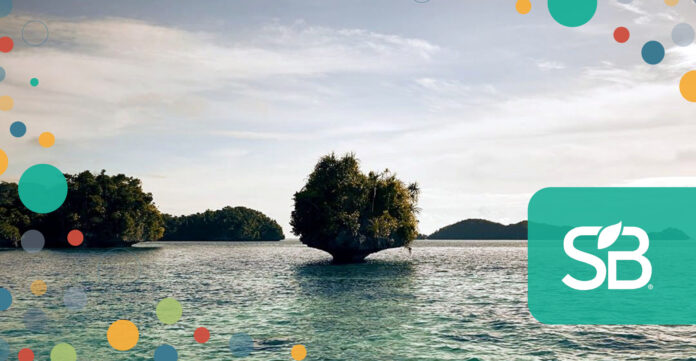In 2017, Iceland launched its Icelandic
Pledge — which asked travelers to commit to
several responsible behaviors — kicking off a deluge of similar pledges in
destinations worldwide. By and large, these pledges were passive, opt-in
endeavors that acknowledged the burden of tourism and encouraged appropriate
behavior on behalf of travelers; but reinforcement was often non-existent.
Entering the “new era” of tourism, some pledges have weathered the industry’s
transition toward more science-based commitments and transparent sustainability
goals. However, the most impactful examples have evolved in noteworthy and
intentional ways.
When Dr. Julia Albrecht, senior lecturer in the department of tourism at the
University of Otago;
and Eliza Raymond, co-founder of GOOD
Travel, conducted research on the effectiveness
of tourism pledges in 2019, they
concluded
that “the success of tourism pledges lies with destinations, not travelers; and
for any pledge to be effective, it must be used as part of a destination’s wider
sustainable tourism strategy, rather than an isolated destination-management
intervention.”
During this study, interviewees representing the four destinations on which the
researchers focused — Finland, Hawai’i, New Zealand and Palau —
indicated pledges shouldn’t be a standalone solution but rather one part of
wider behavior change or sustainability initiatives, Raymond said. While pledges
were disrupted in early 2020, “we have seen evidence of this intention in
practice — particularly in New Zealand, where tiaki (care for people, place
and the planet) has been incorporated within the strategies of leading tourism
stakeholders,” she said.
Over the last couple of years, Dr. Albrecht said, “New Zealand’s Tiaki
Promise initiative has been extended into a
collaborative platform that goes beyond the pledge by offering tourism
businesses tools
to integrate Tiaki into the business, as well as products and experiences as a
visitor management and storytelling device.”
Engaging Consumers on the Scope 3 Emissions Journey
Hear more from Kohler, Logitech, Procter & Gamble and Visa on how they are engaging consumers so they better understand the impact of their choices and help companies progress toward their climate goals — at SB’22 San Diego.
Another example is the Palau Pledge — which, in
2018, provided the most comprehensive model for incorporation of a traveler
pledge
in a destination-management model. Communicated via a 16-line passport stamp and
in-flight video shown to all incoming passengers, the Palau Pledge established
the country’s expectations and backed those up with rules. It is enshrined in
Palau’s immigration policy and
law
— and during the global lockdown, this forward-focused initiative expanded even
more.
The Palau Business Pledge was created to
help businesses comply with the law. This included support to create and
implement internal processes and policies that reduce a business’s environmental
impact, positively contribute to the country’s culture, and help educate
visitors about how to keep the pledge during a visit.
Additionally, the Palau Pledge Dive Camp — which helps Palauan school
children learn to dive, so they can consider future careers in tourism — was
launched in partnership with the Ministry of Education.
“We know from global research that 92 percent of eco-tourists are looking for a
holiday destination that has a strong local
culture;
and these visitors are willing to spend more in a destination that offers that,”
said Laura Clarke, co-founder of the Palau Legacy
Project. “Given
Palau’s culture is an incredible tourism asset that adds significant value to
the visitor experience, increasing the number of Palauan-owned and -operated
businesses is an important factor. Encouraging young Palauans to see tourism
careers as open to them, and providing them with some of the necessary skills
via Dive Camp, is a vital part of training and development to ensure the
authentic future of the industry.”
The pandemic pause was also used to plan phase two of the Palau Pledge, which
included creating Ol’au Palau — an incentive program
tied to the pledge: “Ol’au Palau uses the principles of reward and the
gamification of sustainable, regenerative actions to encourage visitors to learn
more about Palauan culture and about how to keep the Palau Pledge during their
stay,” Clarke said.
By taking respectful, sustainable actions such as learning a few words in
Palauan and booking with businesses that are reducing their impact on the
environment, visitors unlock unique rewards that are only available to Ol’au
Palau participants. Palauan elders are working with the Palau Legacy Project to
design the program and app, which will be launched in early 2023. “Ol’au Palau
will help extend the integration of Palau Pledge into and across the entire
visitor experience in Palau,” she added.
Beyond the expansion of destination-specific pledges, the industry has recently
seen a proliferation of pledges and pledge-like structures across a wide range
of issues targeting tourism stakeholders — including service providers and
tourism business owners. Examples include the PLEDGE™ on Food
Waste — a certification and benchmarking
system focused on seven key pillars; the Future of Tourism
Coalition — a signatory-based movement built
around 13 guiding principles; and Tourism Declares a Climate
Emergency
— another signatory-based commitment requiring the creation of climate-action
plans,
which morphed into the Glasgow Declaration on Climate Action in
Tourism
and was launched in November 2021 at
COP26.
The success of any of tourism-related pledges, Dr. Albrecht said, is in their
integration into wider destination-management, sustainability and marketing
strategies.
“Consistent messaging is key: Mass tourism destinations or destinations whose
visitor communication, marketing and promotion are suggestive of unrestrained
hedonism
may struggle to attract and satisfy visitors who prioritize sustainable or
responsible travel and related behaviors,” she said.
This requires that industry stakeholders across all facets of destination
management work closely together to ensure pledges are strategically developed
to reinforce desired actions and behavior — and that other elements of
destination-management plans support pledge content. When cohesively developed
with intention and not just as passive lip service, they can create awareness as
well as activate desired action.
“Many visitors want to do the right thing — they just don’t always know what the
right thing to do is when they are in a new country or place,” Clarke asserted.
“Visitor pledges, and the education programs that surround those pledges, can
play a crucial role in helping visitors to understand their responsibilities and
take positive action to behave sustainably and responsibly when they are
traveling.”
Published Oct 18, 2022 8am EDT / 5am PDT / 1pm BST / 2pm CEST
JoAnna Haugen
Founder
Rooted
JoAnna Haugen is a writer, speaker and solutions advocate who has worked in the travel and tourism industry for her entire career. She is also the founder of Rooted — a solutions platform at the intersection of sustainable tourism, social impact and storytelling. A returned US Peace Corps volunteer, international election observer and intrepid traveler, JoAnna helps tourism professionals decolonize travel and support sustainability using strategic communication skills.










